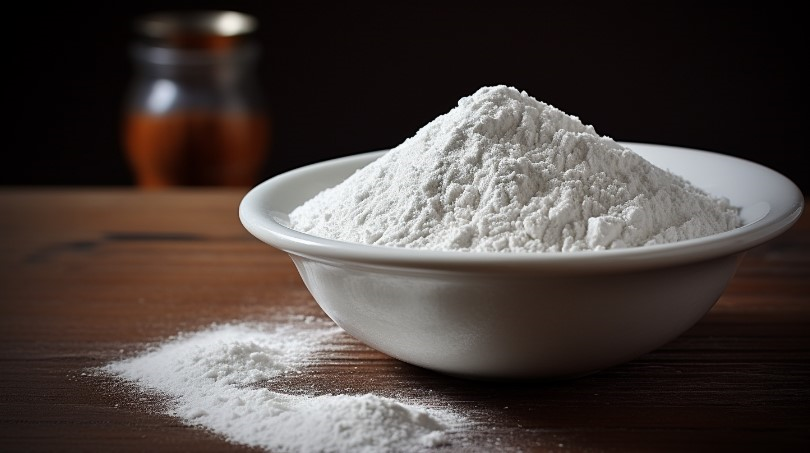colina

La colina, constituyente de la lecitina y presente también en la esfingomielina, es una fuente variable de grupos metilo en el organismo y participa en la síntesis y el metabolismo de los donantes de metilo. Además, la colina es un precursor del neurotransmisor acetilcolina.
Metabolismo de absorción
Parte de la colina ingerida por los adultos puede ser descompuesta por la flora intestinal para formar betaína y producir metilamina. La colina libre no descompuesta se absorbe en el intestino delgado.
Además de la colina libre, existen ésteres de colina procedentes de fuentes alimentarias, principalmente fosfato de colina, glicerina de colina, esfingomielina y fosfatidilcolina. Tras la hidrólisis enzimática, se forma colina libre, que se absorbe en la circulación portal hepática.
Además, la fosfatidilcolina y la esfingomielina liposolubles también pueden ser absorbidas por el organismo a través de la linfa en forma de partículas quilosas. Por lo tanto, la biodisponibilidad de la colina procedente de distintas fuentes es diferente.
La colina es un componente importante de la lecitina y la esfingomielina, y todos los tejidos pueden almacenar colina, pero los más abundantes son el hígado, el riñón, la mama, la placenta y el cerebro.
La relación con la salud
La colina desempeña su función fisiológica principalmente desde dos aspectos: por un lado, desempeña su función fisiológica la colina en sí misma o como grupo colina necesario para la síntesis de otras sustancias; por otro lado, desempeña funciones fisiológicas como donante de metilo.
Promueven el desarrollo del cerebro y participan en la señalización celular
La colina interviene en la señalización celular, lo que puede favorecer el desarrollo cerebral y mejorar la memoria. La colina es esencial para la formación de acetilcolina, un neurotransmisor que desempeña un papel importante en actividades cognitivas como el aprendizaje y la memoria, la memoria de trabajo espacial, la atención, el movimiento espontáneo y el comportamiento inquisitivo.
El hipocampo y la corteza cerebral son órganos y tejidos importantes que intervienen en el aprendizaje y la memoria en el sistema nervioso central. La colina puede favorecer el desarrollo del hipocampo y la corteza cerebral en el proceso de desarrollo del cerebro.
Los resultados de estudios sobre epilepsia, Parkinson y Alzheimer han demostrado que la colina puede aliviar la pérdida de memoria y tiene cierto efecto sobre el déficit de atención, la hiperactividad, los trastornos neuromusculares y los trastornos maníacos en general.
Promover el metabolismo de las grasas
VLDL es el único transportador para que el hígado exporte grasa a la periferia, y la colina es uno de los componentes importantes de la síntesis de VLDL. Una cantidad suficiente de colina puede sintetizar suficiente VLDL, transportando así TG en el hígado, previniendo y reduciendo el depósito excesivo de TG en el hígado.
Sin colina, la grasa puede acumularse en el hígado, formando un hígado graso. La aplicación clínica de la colina en el tratamiento de la cirrosis, la hepatitis y otras enfermedades hepáticas tiene un buen efecto.
Un componente importante del biofilm
Los fosfolípidos de las biopelículas son principalmente fosfatidilcolina (lecitina), fosfatidiletanolamina, fosfatidilserina y esfingomielina, entre los cuales la lecitina es el principal fosfolípido de la membrana celular (> 50%), y la colina es el principal componente de la lecitina.
Participa en el metabolismo del metilo
La colina es una fuente de grupos metilo variable en el organismo, que actúa sobre los productos de los grupos metilo sintéticos y participa en el metabolismo del metilo en el organismo.
Tras la ingestión de colina, ésta puede entrar en diferentes vías metabólicas y producir grupos metilo inestables, que se utilizan para la homocisteína para formar metionina, el ácido guanidín acético para formar creatina y la síntesis de epinefrina.
Carencias y excesos
Falta
La deficiencia de colina puede provocar una función hepática anormal y la acumulación de grandes cantidades de lípidos (principalmente triglicéridos) en el hígado, formando hígado graso y posiblemente cáncer de hígado.
La deficiencia de colina también afecta a la función renal y puede provocar anomalías en la reabsorción de agua, la secreción de sodio, la tasa de filtración glomerular y el flujo sanguíneo renal, así como hemorragias renales extensas.
En el caso de los fetos y los lactantes, es probable que afecte al desarrollo del cerebro. Es bien sabido que los suplementos de ácido fólico pueden prevenir las malformaciones del tubo neural en el feto, pero la deficiencia de colina también puede causar malformaciones del tubo neural en el feto. Tanto el folato como la colina pueden utilizarse como donantes de metilo para metilar el ADN.
Demasiado
La ingesta excesiva de colina por vías no alimentarias, como las inyecciones intravenosas e intraperitoneales, puede provocar olor corporal, sudoración, salivación, hipotensión arterial y toxicidad hepática.
Principal fuente de alimento
La colina se encuentra en los alimentos principalmente en forma de lecitina en la membrana celular de diversos alimentos. Yema de huevo, hígado, cacahuetes, germen de trigo, soja contenido es muy rico, verduras en lechuga, coliflor contenido también es alto.
Materiales de referencia:
[1] Sociedad China de Nutrición. Ingesta de referencia de nutrientes dietéticos para residentes chinos. Beijing: Science Press, 2014. [2]Fisher M C , Zeisel S H , Mar M H , et al. Los inhibidores de la captación y el metabolismo de la colina causan anomalías de desarrollo en embriones de ratón neurulante[J]. Teratology, 2001, 64(2):114-122.[3]Holler T , Cermak J M , Blusztajn J K . La suplementación dietética de colina en ratas preñadas aumenta la actividad de la fosfolipasa D hipocampal de la descendencia[J]. The FASEB Journal, 1996, 10(14).[4]Bjelland, I. , et al. "Choline in anxiety and depression: the Hordaland Health Study". American Journal of Clinical Nutrition 4:1056.[5] Chan K C , So K F , Wu E X . La espectroscopia de resonancia magnética de protones reveló la reducción de colina en la corteza visual en un modelo experimental de glaucoma crónico[J]. Experimental Eye Research, 2009, 88(1):65-70.............
proveedor de colina: www.backvita.com
Correo electrónico: [email protected]
Teléfono: +86 (029) 8187 2325
